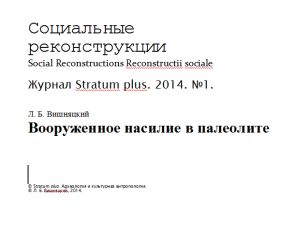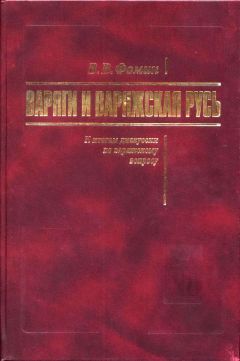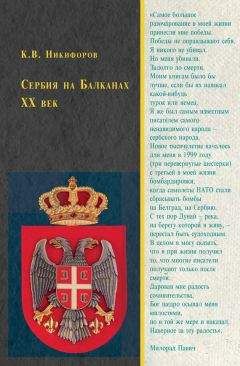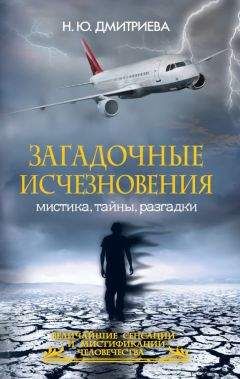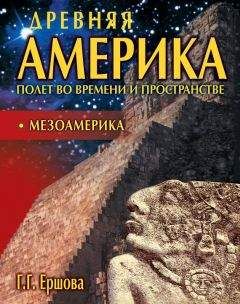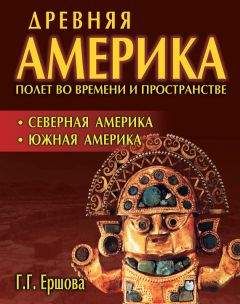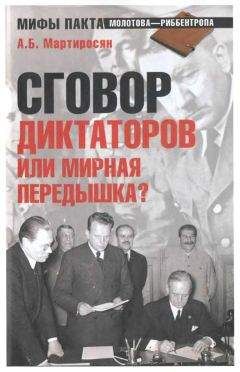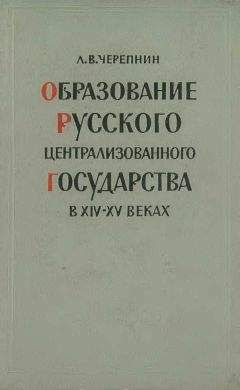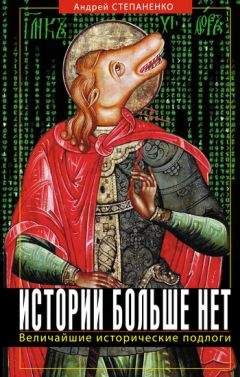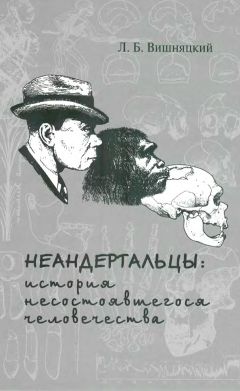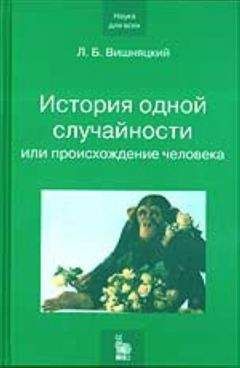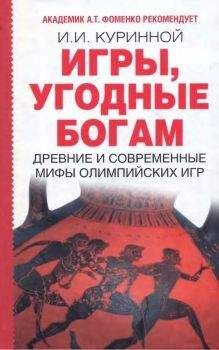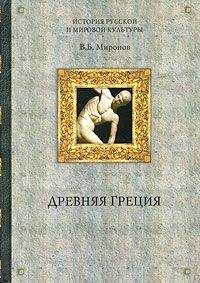Леонид Вишняцкий - Неандертальцы какими они были, и почему их не стало
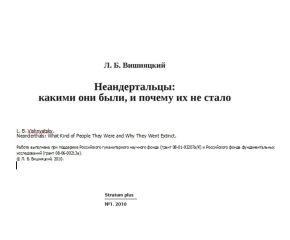
Скачивание начинается... Если скачивание не началось автоматически, пожалуйста нажмите на эту ссылку.
Жалоба
Напишите нам, и мы в срочном порядке примем меры.
Описание книги "Неандертальцы какими они были, и почему их не стало"
Описание и краткое содержание "Неандертальцы какими они были, и почему их не стало" читать бесплатно онлайн.
Эта небольшая книжка посвящена неандертальцам - самым близким родственникам гомо сапиенс среди всех существ, когда-либо обитавших на нашей планете. Ни об одном другом виде ископаемых гоминид мы не знаем сегодня столько, сколько о них. Автор рассказывает об их анатомии, генетике, эволюционной истории, о разных сторонах их культуры. Особое внимание уделено вопросу об интеллектуальном потенциале неандертальцев, проблеме их гибридизации с гомо сапиенс, а также причинам их исчезновения.
Arnold M. L. and A. Meyer. 2006. Natural hybridization in primates: one evolutionary mechanism. Zoology 109, 261-276.
Arsuaga J. L., A. Gracia, T. Martinez, C. Lorenzo. 1996. The Sima de los Huesos (Sierra de Atapuerca, Spain) cranial evidence and the origin of Neandertals. In: Carbonell E. and M. Vaquero (eds.). The Last Neandertals, the First Anatomically Modern Humans. Barcelona, 39-49.
Barker G. 2002. Prehistoric foragers and farmers in Southeast Asia: Renewed investigations at Niah Cave, Sarawak. Proceedings of the Prehistoric Society 68, 147-164.
Bernard A., V. Daux, C. Lecuyer, J.-P. Brugal, D. Genty,
K.Wainer, V. Gardien, F. Fourel, J. Jaubert. 2009. Pleistocene seasonal temperature variations recorded in the 618O of Bison priscus teeth. Earth and Planetary Science Letters 283, 133-143.
Blasco R. 2008. Human consumption of tortoises at level IV of Bolomor Cave (Valencia, Spain). Journal of Archaeological Science 35, 2839-2848.
Bocherens H., D. G. Drucker, D. Billiou, M. Patou-Mathis, B. Vandermeersch. 2005. Isotopic evidence for diet and subsistence pattern of the Saint-Cesaire I Neanderthal: review and use of a multi-source mixing model. Journal of Human Evolution, 49: 71-87.
Bob L.-J., J.-L. Heim, K. Honda, S. Maeda. 2002. The potential Neandertal vowel space was as large as that of modern humans. Journal of Phonetics 30, 465-84.
Bobda E., J.-M. Geneste, C. Griggo, N. Mercier, S. Muhesen, J.L. Reyss, A. Taha, H. Valladas. 1999. A levallois point embedded in the vertebra of a wild ass (Equus africanus): hafting, projectiles and Mousterian hunting weapons. Antiquity 73, 394-402.
Bobda E., S. Bonilauri, J. Connan, D. Jarvie, N. Mercier, M. Tobey, H. Valladas, H. Al Sakhel, S. Muhesen. 2008. Middle Palaeolithic bitumen use at Umm el Tlel around 70000 BP. Antiquity 82, 853-861.
Bookstein F., K. Schaffer, H. Prossinger, H. Seidler, M. Fieder, C. Stringer, G.W. Weber, J.-L. Arsuaga,
E. Slice, F. J. Rohlf, W. Recheis, A. J. Mariam,
Литература
F. Marcus. 1999. Comparing frontal cranial profiles in archaic and modern Homo by morphometric analysis. The Anatomical Record 257, 217-224.
Brauer G. 2008. The origin of modern anatomy: By specia- tion or intraspecific evolution? Evolutionary Anthropology 17, 22-37.
Briggs A.W., J. M. Good, R.E. Green, J. Krause, T. Maricic,
U.Stenzel, C. Lalueza-Fox, P. Rudan, D. Brajkovic, Z. Kucan, I. Gusic, R. Schmitz, V. B. Doronichev, L. V. Golovanova, M. de la Rasilla, J. Fortea, A. Rosas, S. Paabo. 2009. Targeted retrieval and analysis of five Neandertal mtDNA genomes. Science 325, 318-321.
Bruner E. 2008. Comparing endocranial form and shape differences in modern humans and Neandertals: a geometric approach. PaleoAnthropology, 93-106.
Carbonell E., J.M. Bermudez de Castro, J.M. Pares. 2008. The first hominin of Europe. Nature 452, 465-470.
Carbonell E. and Z. Castro-Curel. 1992. Palaeolithic wooden artifacts from the Abric Romani (Capellades, Barcelona Spain). Journal of Archaeological Science 19, 707-719.
Carciumaru M., M.-H. Moncel, M. Anghelinu, R. Carciu- maru. 2002. The Cioarei-Borosteni Cave (Carpathian Mountains, Romania): Middle Palaeolithic finds and technological analysis of the lithic assemblages. Antiquity 76, 681-690.
Caspari R. and J. Radovcic. 2006. New reconstruction of Krapina 5, a male Neandertal cranial vault from Krapina, Croatia. American Journal of Physical Anthropology 130, 294-307.
Castro-Curel Z. and E. Carbonell. 1995. Wood pseudo- morphs from level I at Abric Romani, Barcelona, Spain. Journal of Field Archaeology 22, 376-384.
Chase P. G. 1987. The cult of the cave bear. Prehistoric rite or scientific myth? Expedition 29, 4-9.
Churchill S. E., R. G. Franciscus, H. A. McKean-Peraza, J. A. Daniel, B. R. Warren. 2009. Shanidar 3 Nean- dertal rib puncture wound and paleolithic weaponry. Journal of Human Evolution 57, 163-178.
Condemi S. 2000. The Neanderthals: Homo neandertha- lensis or Homo sapiens neanderthalensis? Is there a contradiction between the paleogenetic and the paleoanthropological data? In: Orschiedt J. and
-C. Weniger (eds.). Neanderthals and Modern Humans — Discussing the Transition. Central and Eastern Europe from 50.000-30.000 B.P. Mett- mann: Neanderthal Museum, 287-295.
Coolidge F. L. and T. Wynn. 2009. The Rise of Homo sapiens: The Evolution of Modern Thinking. Malden, Oxford, Chichester: Wiley-Blackwell.
Coon C.S. 1962. The origin of races. New York: Alfred A. Knopf.
Curnoe D. 2006. Timing and tempo of primate speciation. Journal of Evolutionary Biology 19, 59-65.
Dean D., J.-J. Hublin, R. Holloway, R. Ziegler. 1998. On the phylogenetic position of the pre-Neanderthal specimen from Reilingen, Germany. Journal of Human Evolution 34, 485-508.
Deaner R.O., K. Isler, J. Burkart, K. van Schaik. 2007. Overall brain size, and not encephalization quotient, best predicts cognitive ability across non-human primates. Brain, Behavior and Evolution 70, 115124.
Defleur A., T. White, P. Valensi, L. Slimak, E. Cregur- Bonnoure. 1999. Neanderthal cannibalism at Moula- Guercy, Ardeche, France. Science 286, 128-131.
De Giorgio M., M. Jacobsson, N. A. Rosenberg. 2009. Explaining worldwide patterns of human genetic variation using a coalescent-based serial founder model of migration outward from Africa. Proceedings of the National Academy of Sciences of the USA 106, 16057-16062.
De Miguel C. and Henneberg M. 2001. Variation in hominid brain size: How much is due to method? Homo 52, 2-56.
D'Errico F. 2007. The origin of humanity and modern cultures: Archaeology's view. Diogenes 214, 122133.
D'Errico F. and M. F. S. Goni. 2003. Neandertal extinction and the millennial scale climatic variability of OIS 3. Quaternary Science Review 22, 769-788.
D'Errico F., J. Zilhao, M. Julien, D. Baffier, J. Pelegrin. 1998. Neanderthal acculturation in Western Europe? A Critical review of the evidence and its interpretation. Current Anthropology 39, S1-S44.
D'Errico F., C. Henshilwood, G. Lawson, M. Vanhaeren, A.-M. Tillier, M. Soressi, F. Bresson, B. Maureille, A. Nowell, J. Lakarra, L. Backwell, M. Julien. 2003. Archaeological evidence for the emergence of language, symbolism, and music — an alternative multidisciplinary perspective. Journal of World Prehistory 17, 1-70.
Estevez J. 2004. Vanishing carnivores: What can the disappearance of large carnivores tell us about the Neanderthal world? International Journal of Osteoarchaeology 14, 190-200.
Fedele F. G., B. Giaccio, I. Hajdas. 2008. Timescales and cultural process at 40,000 BP in the light of the Campanian ignimbrite eruption, Western Eurasia. Journal of Human Evolution 55, 834-857.
Fernandez S., N. Fuentes, J. S. Carrion, P. Gonzalez- Samperiz, E. Montoya, G. Gil, G. Vega-Toscano, J. A. Riquelme. 2007. The Holocene and Upper Pleistocene pollen sequence of Carihuela Cave, southern Spain. Geobios 40, 75-90.
Finlayson C. 2004. Neanderthals and modern humans. Cambridge: Cambridge University Press.
Finlayson C. 2009. The humans who went extinct: why Neanderthals died out and we survived. New York: Oxford University Press.
Finlayson C., F. G. Pacheco, J. Rodriguez-Vidal, D. A. Fa, J. M. G. Lopez, A. S. Perez. 2006. Late survival of Neanderthals at the southernmost extreme of Europe. Nature 443, 850-853.
Froehle A. W. and S. E. Churchill. 2009. Energetic competition between Neandertals and anatomically modern humans. PaleoAnthropology, 96-116.
Gaudzinski S., E. Turner, A. P. Anzidei, E. Alvarez- Fernandez, J. Arroyo-Cabrales, J. Cinq-Mars,
T. Dobosi, A. Hannus, E. Johnson, S. C. Munzel, A. Scheer, P. Villa. 2005. The use of Proboscidean remains in every-day Palaeolithic life. Quaternary International 126-128, 179-194.
Gowlett J. A. J. 2006. The early settlement of northern Europe: Fire history in the context of climate change and the social brain. Comptes Rendus Palevol 5, 299-310.
Green R.E., J. Krause, S.E. Ptak, A.W. Briggs, M.T. Ronan, J.F. Simons, L. Du, M. Egholm, J.M. Rothberg, M. Paunovic, S. Paabo. 2006. Analysis of one million base pairs of Neanderthal DNA. Nature 444, 330336.
Green R. E., A.-S. Malaspinas, J. Krause, A. W. Briggs, P. L. F. Johnson, C. Uhler, M. Meyer, J. M. Good, T. Maricic, U. Stenzel, K. Prufer, M. Siebauer,
A. Burbano, M. Ronan, J. M. Rothberg,
M.Egholm, P. Rudan, D. Brajkovic, Z. Kucan,
Gusic, M. Wikstrom, L. Laakkonen, J. Kelso, M. Slatkin, S. Paabo. 2008. A complete Neandertal
Литература
mitochondrial genome sequence determined by high-throughput sequencing. Cell 134, 416-426.
Grimaud-Herve D. 1997. L'Evolution de l'encephale chez Homo erectus et Homo sapiens. Cahiers de Paleoanthropologie. Paris: CNRS.
Grunberg J.M. 2002. Middle Paleolithic birch-bark pitch. Antiquity 76, 15-16.
Guatelli-Steinberg D. 2009. Recent studies of dental development in Neandertals: Implications for Neandertal life histories. Evolutionary Anthropology 18, 9-20.
Hambucken A. 1997. La variabilite geographique des Neandertaliens. Anthropologica et Praehistorica 108, 109-120.
Harris J. R. 2006. Parental selection: A third selection process in the evolution of human hairlessness and skin color. Medical Hypotheses 66, 1053-1059.
Harvati K. 2007. Neanderthals and their contemporaries // In: Henke W. and I. Tattersall (eds.). Handbook of Paleoanthropology, vol. 3. Berlin, Heidelberg, New York: Springer, 1717-1748.
Hawks J. and G. Cochran. 2006. Dynamics of adaptive introgression from archaic to modern humans. PaleoAnthropology, 101-115.
Hebsgaard M. B., C. Wiuf, M. Thomas, P. Gilbert, H. Glenner,
Willerslev. 2007. Evaluating neanderthal genetics and phylogeny. Journal of Molecular Evolution 64: 50-60.
Henry and Piperno. 2008. Plants in Neanderthal diet: Plant microfossil evidence from the dental calculus of Shanidar III (Paper presented to the Paleoanthropology Society annual meeting, Vanqouver, 25-26 March 2008).
Higham T. 2006. Revised direct radiocarbon dating of the Vindija G1 Upper Paleolithic neandertals. Proceedings of the National Academy of Sciences of the USA 103, 553-557.
Hockett B. and J. A. Haws. 2005. Nutritional ecology and the human demography of Neandertal extinction. Quaternary International 137, 21-34.
Hofreiter M. and J. Stewart. 2009. Ecological change, range fluctuations and population dynamics during the Pleistocene. Current Biology 19, R584-R594.
Holloway R. L. 1985. The poor brain of Homo sapiens neanderthalensis: see what you please... In: Delson E. (ed.). Ancestors: The hard evidence. New York: Alan R. Liss, 319-324.
Holloway R. L., D. C. Broadfield, M. S. Yuan. 2004. Brain endocasts: The paleoneurological evidence. (The Human fossil record, vol. III). Hoboken, N.J.: Wiley & Sons.
Holloway R. L. 2009. Brain fossils: Endocasts. In: Squire L.R. (ed.). Encyclopedia of Neuroscience, vol. 2. Oxford: Academic Press, 353-361.
Holton N. E. and R. G. Franciscus. 2008. The paradox of a wide nasal aperture in cold adapted Neandertals: a casual assessment. Journal of Human Evolution 55, 942-951.
Hublin J.-J. 1998. Climatic changes, paleogeography and the evolution of Neanderthals. In: Akazawa T., K. Aoki, O. Bar-Yosef (eds.). Neanderthals and modern humans in Western Asia. New York: Plenum Press, 295-310.
Hublin J.-J. 2006. Neandertal as another humankind: where are we now? Terra Nostra (2): 55-59.
Hublin J.-J. 2009. The origin of Neandertals. Proceedings of the National Academy of Sciences of the USA 106, 16022-16027.
Hublin J.J. and S.E. Bailey. 2006. Revisiting the last Neandetals. In: Conard N.J. (ed.). When Neanderthals and Modern Humans Met. Tubingen: Kerns Verlag, 105-128.
Huxley T. H. 1864. Further remarks upon the human remains from the Neanderthal. Natural History Review 1, 429-446.
Kittler R. et al. 2003. Molecular evolution of Pediculus humanus and the origin of clothing. Current Biology 13, 1414-1417.
Klein R. G. 1989. The Human Career. Human Biological and Cultural Origins. Chicago and London: University of Chicago Press. [2nd ed. 1999; 3rd ed. 2009].
Koller J. and D. Mania. 2001. High-tech in the Middle Paleolithic:Neanderthal-manufactured pitch
identified. European Journal of Archaeology 4, 385-397.
Krause J., C. Lalueza-Fox, L. Orlando, W. Enard, R. Green et al. 2007a. The derived FOXP2 variant of modern humans was shared with Neandertals. Current Biology 17, 1-5.
Lalueza-Fox C. 2006. Mitochondrial DNA of an Iberian Neandertal suggests a population affinity with other European Neandertals. Current Biology 16, 629-630. Lalueza-Fox C., H. Rompler, D. Caramelli, C. Staubert,
Catalano, D. Hughes, N. Rohland, E. Pilli,
Longo, S. Condemi, M. de la Rasilla, J. Fortea, A. Rosas, M. Stoneking, T. Schoneberg,
Bertranpetit, M. Hofreiter. 2007. A melanocortin 1 receptor allele suggests varying pigmentation among Neanderthals. Science 318, 1453-1455.
Lee S.-H. and M. Wolpoff. 2003. The pattern of evolution in Pleistocene human brain size. Paleobiology 29, 186-196.
Lewin R. and R. A. Foley. 2004. Principles ofhuman evolution.
2nd ed. Malden/Oxford/Carlton: Blackwell. Lieberman P. and E. S. Crelin. 1971. On the speech of Neandertal man. Linguistic Inquiry 2, 203-222.
Liu H., F. Prugnolle, A. Manica, F. Balloux. 2006. A geographically explicit genetic model of worldwide human-settlement history. American Journal of Human Genetics 79, 230-237.
Macaulay V., C. Hill, A. Achilli, C. Rengo, D. Clarke,
W.Meehan, J. Blackburn, O. Semino, R. Scozzari,
Cruciani, A. Taha, N.K. Shaari, J.M. Raja, P. Ismail, Z. Zainuddin, W. Goodwin, D. Bulbeck,
-J. Bandelt, S. Oppenheimer, A. Torroni,
M.Richards. 2005. Single, rapid coastal settlement of Asia revealed by analysis of complete mitochondrial genomes. Science 308, 1034-1036.
MacLarnon A. M. and G. P. Hewitt. 1999. The evolution of human speach: the role of enhanced breathing control. American Journal of Physical Anthropology 109, 341-363.
McDougall I., F. H. Brown, J. G. Fleagle. 2008. Sapropels and the age of hominins Omo I and II, Kibish, Ethiopia. Journal of Human Evolution 55, 409-420.
Martinez I., M. Rosa, J.-L. Arsuaga et al. 2004. Auditory capacities in Middle Pleistocene humans from the Sierra de Atapuerca in Spain. Proceedings of the National Academy of Sciences of the USA 101, 9976-9981.
Martinez I., J. L. Arsuaga, R. Quam, J. M. Carretero, A. Gracia, L. Rodriguez. 2008. Human hyoid bones from the Middle Pleistocene site of Sima de los Huesos (Sierra de Atapuerca, Spain). Journal of Human Evolution 54, 118-124.
Mazza P. P. A., F. Martini, B. Sala, M. Magi, M. P. Colombini,
Giachi, F. Landucci, C. Lemorini, F. Modugno, E. Ribechini. 2006. A new Palaeolithic discovery: tar-hafted stone tools in a European Mid-Pleistocene bone-bearing bed. Journal of Archaeological Science
Литература
33, 1310-1318.
Mellars P. 1996. The Neanderthal Legacy. An Archaeological Perspective from Western Europe. Princeton: Princeton University Press.
Mithen S. 1996. The Prehistory of the Mind. London: Thames and Hudson.
Подписывайтесь на наши страницы в социальных сетях.
Будьте в курсе последних книжных новинок, комментируйте, обсуждайте. Мы ждём Вас!
Похожие книги на "Неандертальцы какими они были, и почему их не стало"
Книги похожие на "Неандертальцы какими они были, и почему их не стало" читать онлайн или скачать бесплатно полные версии.
Мы рекомендуем Вам зарегистрироваться либо войти на сайт под своим именем.
Отзывы о "Леонид Вишняцкий - Неандертальцы какими они были, и почему их не стало"
Отзывы читателей о книге "Неандертальцы какими они были, и почему их не стало", комментарии и мнения людей о произведении.





